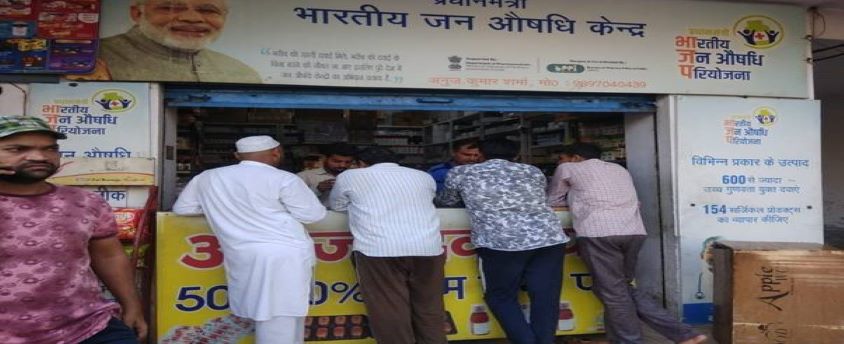Janaushadhi Kendra
10, Mar 2023

Prelims level : Schemes
Mains level : GS-II Issues relating to development and management of Social Sector or Services relating to Health, Education, Human Resources.
Why in News?
- On the occasion of ‘the 5th Jan Aushadhi Diwas’, the government inaugurated ‘NaMo Day Care Centre’ and flagged off four NaMo Mobile Healthcare Units.
About the News:
- The Department of Pharmaceuticals is celebrating Jan Aushadhi Diwas from March 1 to March 7, 2023, to create awareness about the Jan Aushadhi Scheme.
- It’s objective is to generate awareness about the usage of generic medicines and the benefits of Jan Aushadhi Pariyojana and its salient features and achievements.
About Pradhan Mantri Bhartiya Janaushadhi Pariyojana (PMBJP):
- The scheme aims to open centres from where quality generic medicines, consumables and surgical items are available at affordable prices for all, so as to reduce the out-of-pocket expenditure of consumers/patients.
- Ministry: Department of Pharmaceuticals, Ministry of Chemicals & Fertilizers
- Implementation Agency: Pharma & Medical Bureau of India (PMBI) (erstwhile Bureau of Pharma PSUs in India (BPPI)). It has also developed the Janaushadhi Sugam Application.
- Launched: November 2008
- Current status: As of January 31, 2023, the number of stores has increased to 9082.
- Target: To increase the number of Kendras (PMBJKs) to 10,000 by the end of December 2023.
How price of medicine is determined in the PMBJKs?
- A medicine is priced on the principle of a maximum of 50% of the average price of the top three brands of branded medicines. Thus, the prices of Jan Aushadhi Medicines are cheaper by at least 50% and in some cases, by 80% to 90% of the market price of the branded medicines.
- Under the Scheme, medicines are procured from World Health Organization – Good Manufacturing Practices (WHO-GMP) certified suppliers for ensuring the quality of the products.
What is Ayushman Bharat PMJAY Yojana?
- The PMJAY, world’s largest health insurance/assurance scheme fully financed by the government, provides a cover of Rs. 5,00,000 per family per year for secondary and tertiary care hospitalisation across public and private empanelled hospitals in India.
- Pre-hospitalisation and Post-hospitalisation expenses such as diagnostics and medicines are also included in the scheme.
- Coverage: Over 10.74 crore poor and vulnerable entitled families (approximately 50 crore beneficiaries) are eligible for these benefits.
- Provides cashless access to health care services for the beneficiary at the point of service.
What is its significance?
- Helps reduce catastrophic expenditure for hospitalizations, which pushes 6 crore people into poverty each year.
- Helps mitigate the financial risk arising out of catastrophic health episodes.
Eligibility Criteria’s:
- No restrictions on family size, age or gender.
- All pre–existing conditions are covered from day one.
- Covers up to 3 days of pre-hospitalization and 15 days post-hospitalization expenses such as diagnostics and medicines.
- Benefits of the scheme are portable across the country.
- Services include approximately 1,393 procedures covering all the costs related to treatment, including but not limited to drugs, supplies, diagnostic services, physician’s fees, room charges, surgeon charges, OT and ICU charges etc.
- Public hospitals are reimbursed for the healthcare services at par with the private hospitals.
Challenges and Concerns:
- Medical audits have also revealed that private hospitals are more likely to indulge in fraud and abuse than public hospitals and more likely to discharge patients early post-surgery to cut costs.
- Ensuring the accountability of private hospitals to provide efficient and high-quality care is a pre-eminent challenge for scheme implementation.
- There is huge State-wise variation in the share of empanelled private hospitals from less than 25% in most of the north-eastern and hill States to 80% in Maharashtra.
- Private hospitals have fewer beds than public hospitals and are more likely to be empanelled for surgical packages and super-specialties.






